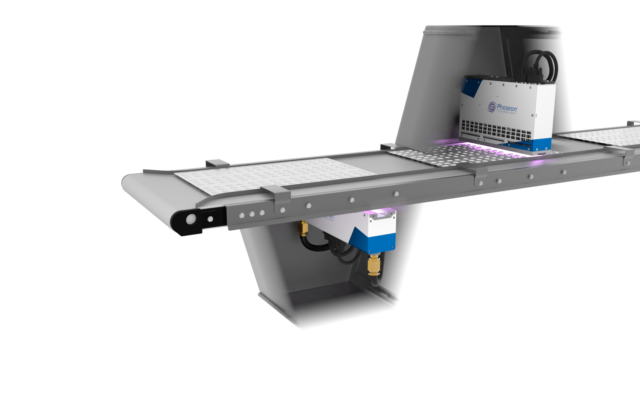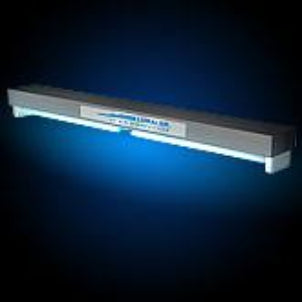Discovering UV Sanitation: An Essential Tool in the Battle Against Unsafe Virus
As the world deals with an ever-increasing threat from dangerous virus, the search for efficient methods of disinfection has actually become an immediate concern. One such method that has actually garnered significant focus is UV disinfection. In this conversation, we will certainly delve right into the globe of UV disinfection, uncovering its prospective as a vital device in the battle against hazardous pathogens.
Just How Does UV Disinfection Work?
UV sanitation works by making use of ultraviolet (UV) light to eliminate dangerous virus and stop their spread. This highly efficient technique entails using UV radiation to interrupt the DNA and RNA of microorganisms, providing them incapable to replicate and creating their supreme damage.
When UV light is made use of for sanitation, it is typically sent out from a lamp or bulb that produces a particular wavelength of UV-C light. uv surface disinfection. This wavelength, varying from 200 to 280 nanometers, is especially efficient at passing through the external cell wall surface of bacteria, infections, and other bacteria. As soon as inside the cell, the UV radiation targets and damages the genetic material, stopping the bacterium from duplicating and creating infection
UV disinfection systems are developed to emit the ideal intensity and period of UV light to make certain reliable virus elimination. The dosage of UV light needed for disinfection depends upon elements such as the type of bacterium, its resistance to UV radiation, and the specific application. Additionally, the system must be meticulously crafted to make sure proper exposure of the target pathogens and to avoid any kind of prospective harm to human beings or the atmosphere.
The Advantages of UV Sanitation
UV sanitation offers a wide variety of advantages in efficiently removing damaging virus and reducing the danger of infection. Unlike traditional disinfection techniques that count on chemicals, UV disinfection makes use of ultraviolet light to destroy the DNA and RNA of microorganisms, making them incapable to replicate and cause infections.
One more considerable advantage of UV sanitation is its effectiveness in eliminating a large range of microorganisms. UV light has actually been confirmed to successfully remove bacteria, viruses, fungi, and protozoa, consisting of those that are immune to traditional disinfectants. This broad-spectrum efficiency makes UV disinfection a flexible device in numerous setups, such as medical care centers, water treatment plants, and food processing industries.
Along with its efficacy, UV sanitation also offers rapid disinfection cycles. Unlike other approaches that call for extensive call times or recurring applications, UV disinfection can achieve considerable pathogen decrease immediately. This reliable and quick process permits for boosted performance, lowered downtime, and raised general functional effectiveness.
Additionally, UV disinfection is a non-contact approach, which implies that it does not require straight physical call with the items or surfaces being decontaminated. This attribute makes it suitable for usage on fragile devices and sensitive products that might be harmed or influenced by other disinfection approaches.
Applications of UV Sanitation in Medical Care

UV sanitation is also used in the sterilization of medical devices and tools. In addition, UV sanitation is made use of in water therapy systems within medical care facilities.
Moreover, UV sanitation innovation is utilized in the disinfection of healthcare attires and individual safety tools (PPE) By utilizing UV light, medical care professionals can make sure that their uniforms and PPE are devoid of microorganisms, avoiding the transmission of infections in between individuals and health care employees.
UV Disinfection in Public Spaces
Public areas are progressively implementing UV disinfection modern technology as a vital procedure to combat the spread of damaging pathogens. With the ongoing global pandemic and the constant threat of transmittable illness, the need for reliable sanitation techniques in public areas has actually ended up being critical. UV disinfection uses a reliable and reliable solution hereof.

UV disinfection systems make use of ultraviolet light to shut down the DNA and RNA of microorganisms, infections, and various other virus. The usage of UV disinfection technology in public rooms not just aids in minimizing the danger of infection however likewise instills confidence amongst the public concerning i was reading this their safety and security.
As public areas remain to adapt to the difficulties postured by transmittable conditions, UV sanitation innovation plays a crucial role in guaranteeing a clean and safe atmosphere. By carrying out such procedures, public areas can efficiently reduce the spread of hazardous microorganisms and add to the overall health of the area.
The Future of UV Sanitation Modern Technology
As the demand for enhanced sanitation techniques continues to grow in action to the recurring worldwide pandemic and the continuous threat of infectious conditions, the future of UV sanitation technology holds promising advancements in guaranteeing even much more efficient and effective pathogen obliteration in numerous settings.

One area of improvement is the growth of more small and mobile UV sanitation tools. These tools would enable for less complicated and much more versatile release in a variety of settings, such as offices, schools, and transportation systems. In addition, developments in automation and robotics are being checked out to boost the efficiency and effectiveness of UV hop over to here sanitation procedures. This consists of making use of autonomous robots geared up with UV-C lights to browse and decontaminate huge locations promptly and accurately.
One more area of expedition is using UV sanitation in air purification systems. By incorporating UV-C lights right into cooling and heating systems, air-borne virus can be properly reduced the effects of, decreasing the threat of transmission in indoor settings.
Furthermore, scientists are checking out the use of UV disinfection in visit this web-site food handling centers to guarantee the safety and top quality of food products. UV-C light has been discovered to be reliable in eliminating foodborne virus, providing a chemical-free option to traditional disinfection techniques.
Final Thought
In final thought, UV sanitation is a crucial tool in the fight versus harmful microorganisms. With its capability to offer a chemical-free and environmentally pleasant approach of sanitation, UV modern technology holds fantastic potential for the future.
UV disinfection systems are developed to send out the ideal strength and duration of UV light to guarantee effective virus elimination. The dose of UV light needed for disinfection depends on elements such as the type of microorganism, its resistance to UV radiation, and the particular application. Unlike traditional sanitation techniques that count on chemicals, UV sanitation uses ultraviolet light to damage the DNA and RNA of bacteria, rendering them incapable to replicate and cause infections.In addition to its efficiency, UV sanitation also supplies rapid disinfection cycles. One of the major applications of UV sanitation in healthcare is in the disinfection of client areas and operating movie theaters.